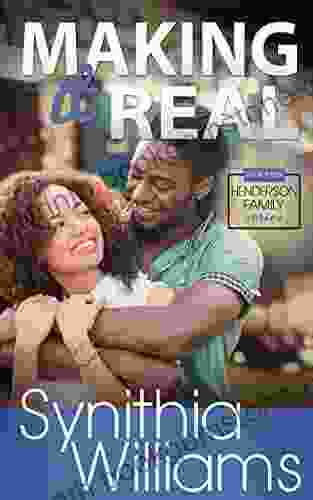Readings From the Field: Unlocking Innovation Through Design Briefs


In today's rapidly evolving business landscape, organizations that embrace design thinking and innovation are poised for success. Design briefs play a pivotal role in this process, serving as blueprints that articulate project goals, user needs, and design constraints. By providing a clear framework and guiding principles, design briefs empower teams to generate innovative solutions that meet the needs of end-users and drive business outcomes.
4.8 out of 5
| Language | : | English |
| File size | : | 15135 KB |
| Text-to-Speech | : | Enabled |
| Screen Reader | : | Supported |
| Enhanced typesetting | : | Enabled |
| Print length | : | 152 pages |
| Lending | : | Enabled |
Elements of a Compelling Design Brief
Effective design briefs are characterized by several key elements:
- Clear Problem Statement: Defines the challenge or opportunity that the design solution will address, outlining the specific user needs or business goals that need to be met.
- Target Audience: Identifies the specific group of users or customers for whom the solution is being designed, including their demographics, behaviors, and pain points.
- Design Constraints: Outlines any limitations or guidelines that must be adhered to during the design process, such as budget, timelines, or technical requirements.
- Design Vision: Articulates the desired outcome of the design solution, including its user experience, functionality, and aesthetic qualities.
- Evaluation Criteria: Establishes the metrics and methods that will be used to assess the success of the design solution, ensuring that it meets the intended goals.
Benefits of Using Design Briefs
Design briefs offer numerous benefits for organizations and design teams:
- Improved Collaboration: By providing a shared understanding of the project goals and constraints, design briefs facilitate effective collaboration among team members, ensuring that everyone is working towards the same objective.
- Enhanced Innovation: Clear design briefs foster creativity and innovation by providing a structured framework within which designers can explore new ideas and solutions.
- Reduced Risk: By outlining the design constraints and evaluation criteria, design briefs help to mitigate project risks by ensuring that the solution meets the necessary requirements and aligns with business objectives.
- Accelerated Time-to-Market: By providing a clear roadmap for the design process, design briefs enable teams to work more efficiently and effectively, reducing the time it takes to bring innovative products or services to market.
Case Studies of Successful Design Briefs
Numerous organizations have successfully leveraged design briefs to drive innovation and achieve business success:
- Nike "FuelBand" Design Brief: This design brief challenged Nike designers to create a wearable fitness tracker that would motivate users to lead more active lifestyles. The brief outlined user needs, design constraints, and evaluation criteria, resulting in a product that has sold over 25 million units worldwide.
- IDEO "Safe Births" Design Brief: This brief tasked IDEO designers with developing a low-cost, portable device that could improve maternal and newborn health in developing countries. The design brief included extensive user research and field testing, leading to the creation of the LIFEwrap, a device that has saved thousands of lives.
- IDEO "Smart Thermostat" Design Brief: This brief asked IDEO designers to create a smart thermostat that would be both user-friendly and energy-efficient. The brief focused on user experience, design constraints, and sustainability, resulting in the Nest Thermostat, which has become one of the best-selling smart thermostats on the market.
In the ever-changing landscape of business and technology, design briefs are essential tools for organizations seeking to foster innovation, improve collaboration, and achieve successful outcomes. By providing a clear framework, guiding principles, and evaluation criteria, design briefs empower teams to develop innovative solutions that meet the needs of end-users and drive business success. By embracing the power of design briefs, organizations can unlock their potential for innovation and create products and services that transform lives and industries.
4.8 out of 5
| Language | : | English |
| File size | : | 15135 KB |
| Text-to-Speech | : | Enabled |
| Screen Reader | : | Supported |
| Enhanced typesetting | : | Enabled |
| Print length | : | 152 pages |
| Lending | : | Enabled |
Do you want to contribute by writing guest posts on this blog?
Please contact us and send us a resume of previous articles that you have written.
 Best Book
Best Book Page Flip
Page Flip Bookshelf
Bookshelf Literary loom
Literary loom Chapter
Chapter Bookish
Bookish PageTurner
PageTurner Bibliophile
Bibliophile Story
Story Inkwell
Inkwell Bookworm
Bookworm Labyrinth
Labyrinth Plot Twist
Plot Twist Prose
Prose Paperback
Paperback Storyteller
Storyteller Sanctuary
Sanctuary Fiction
Fiction Reading
Reading Chronicle
Chronicle Read
Read R P Jones
R P Jones Gianrico Carofiglio
Gianrico Carofiglio J Z Foster
J Z Foster Kyle Widner
Kyle Widner Ward Larsen
Ward Larsen Sandee Cohen
Sandee Cohen John Logan
John Logan J Robert Kennedy
J Robert Kennedy D K Holmberg
D K Holmberg Dan Abnett
Dan Abnett Joan D Vinge
Joan D Vinge Tony Rafael
Tony Rafael Lisa Morton
Lisa Morton Laura Donnelly Bethmann
Laura Donnelly Bethmann Daily Language Learning
Daily Language Learning Taylor Fuller
Taylor Fuller Douglas Preston
Douglas Preston Jake Spicer
Jake Spicer Lorne Ryburn
Lorne Ryburn Cornelius N Grove
Cornelius N Grove Mark Bourrie
Mark Bourrie Max Allan Collins
Max Allan Collins Sarena Ulibarri
Sarena Ulibarri Jeremy Ford
Jeremy Ford Kristina Mcmorris
Kristina Mcmorris Clementina Oluchi Augustine
Clementina Oluchi Augustine Eric Lax
Eric Lax Sarah Thornton
Sarah Thornton D Dauphinee
D Dauphinee Mia Black
Mia Black Sara Ackerman
Sara Ackerman John Grisham
John Grisham Pat Grillo
Pat Grillo Mancho Soto
Mancho Soto John Tanner
John Tanner Roberto Pedreira
Roberto Pedreira Diana Hollingsworth Gessler
Diana Hollingsworth Gessler P A Piatt
P A Piatt Irene Levin Berman
Irene Levin Berman Steve Reifenberg
Steve Reifenberg Tana Stone
Tana Stone Isabella Maldonado
Isabella Maldonado Terry Darlington
Terry Darlington Robert Isenberg
Robert Isenberg Nick Jans
Nick Jans Philip Simmons
Philip Simmons Tony Pike
Tony Pike Crypto Dukedom
Crypto Dukedom Yunte Huang
Yunte Huang Pat Kramer
Pat Kramer Thefirstdefier
Thefirstdefier Karl Johnson
Karl Johnson Coert Voorhees
Coert Voorhees Yoko Hatta
Yoko Hatta Marie Killilea
Marie Killilea Megan Lynch
Megan Lynch David G Hartwell
David G Hartwell William Schoell
William Schoell Wyclef Jean
Wyclef Jean Marius Kociejowski
Marius Kociejowski Nawoko
Nawoko Jane Sutcliffe
Jane Sutcliffe Mark Cramer
Mark Cramer Colin Souness
Colin Souness George Saunders
George Saunders Laurent Dubois
Laurent Dubois Fred Ladd
Fred Ladd Stephen Kinzer
Stephen Kinzer Frances Dinkelspiel
Frances Dinkelspiel Mary Boone
Mary Boone M R Forbes
M R Forbes Janet Koplos
Janet Koplos Harold P Howard
Harold P Howard Torre Deroche
Torre Deroche Jon Breakfield
Jon Breakfield Dalai Lama
Dalai Lama Maya Angelou
Maya Angelou Dennis Valder
Dennis Valder Sarah Culberson
Sarah Culberson Sarah Jackson
Sarah Jackson David E Wilkins
David E Wilkins Joshua M Greene
Joshua M Greene Robert De La Sizeranne
Robert De La Sizeranne Dan Zehr
Dan Zehr Susan Hayes
Susan Hayes Douglas Century
Douglas Century Craig Carey
Craig Carey Ron Celano
Ron Celano Trenae
Trenae Tim Judah
Tim Judah Synithia Williams
Synithia Williams Craig A Falconer
Craig A Falconer Karen Mcnally
Karen Mcnally Eleanor Ford
Eleanor Ford Jeromy Hopgood
Jeromy Hopgood Domnica Radulescu
Domnica Radulescu Kathryn Mcmaster
Kathryn Mcmaster Carrie Stuart Parks
Carrie Stuart Parks Craig Briggs
Craig Briggs Serena Gilbert
Serena Gilbert Dakota James
Dakota James Dakota Krout
Dakota Krout Robert E Innis
Robert E Innis Danica Roem
Danica Roem Tracy Lambert
Tracy Lambert David Mikics
David Mikics Roy Kinnard
Roy Kinnard Euclides Da Cunha
Euclides Da Cunha Mia Michaels
Mia Michaels Liza Rodman
Liza Rodman Kirstin Dow
Kirstin Dow Jason M Hough
Jason M Hough John Mcwade
John Mcwade Michelle Brown
Michelle Brown Michael Reardon
Michael Reardon James Alan Gardner
James Alan Gardner Ella Barrick
Ella Barrick David W Galenson
David W Galenson Jessica Walstad
Jessica Walstad Dan Grunfeld
Dan Grunfeld Nigel Barley
Nigel Barley Emma Larkin
Emma Larkin Clyde D Souza
Clyde D Souza Maggie Rowe
Maggie Rowe Monika Forsberg
Monika Forsberg Bob Martin
Bob Martin Cynthia Saltzman
Cynthia Saltzman S A Snyder
S A Snyder Ernest J Gaines
Ernest J Gaines Dave Willmarth
Dave Willmarth Craig Seymour
Craig Seymour Piera Sonnino
Piera Sonnino Cory Doctorow
Cory Doctorow Leah Gallo
Leah Gallo Coralie Bickford Smith
Coralie Bickford Smith Gabrielle Selz
Gabrielle Selz Nelson Demille
Nelson Demille Connie Mcbride
Connie Mcbride Melissa Stephenson
Melissa Stephenson Elizabeth May
Elizabeth May Darren Critchley
Darren Critchley Myriam Gurba
Myriam Gurba Dan Gheno
Dan Gheno Kristina Evans
Kristina Evans John Humphries
John Humphries Tom Hill
Tom Hill Clifford Irving
Clifford Irving Donald Spoto
Donald Spoto Blair Polly
Blair Polly Bill Geist
Bill Geist Corky Parker
Corky Parker Eric Trueheart
Eric Trueheart Tc Manning
Tc Manning Dr Quinta
Dr Quinta Kate Moore
Kate Moore Cornelius Tacitus
Cornelius Tacitus Ernst Bergen
Ernst Bergen Alexa West
Alexa West Karolyn Kiisel
Karolyn Kiisel Peter Parnell
Peter Parnell Harvey J Kaye
Harvey J Kaye Joy Deja King
Joy Deja King Fiona Davis
Fiona Davis Dk Eyewitness
Dk Eyewitness Kenya Clark
Kenya Clark Crystal Allen
Crystal Allen Sujean Rim
Sujean Rim Kristen Britain
Kristen Britain Thaddeus Carhart
Thaddeus Carhart Jodi Picoult
Jodi Picoult Marc Canter
Marc Canter Conn Iggulden
Conn Iggulden Helen Armstrong
Helen Armstrong Hayley Stone
Hayley Stone Yuriko Saito
Yuriko Saito Cynthia Newcomer Daniel
Cynthia Newcomer Daniel Dan Diggles
Dan Diggles Cynthia Royce
Cynthia Royce Clayton Thomas Muller
Clayton Thomas Muller C F Jernigan
C F Jernigan Scott Moon
Scott Moon Jennifer Brozek
Jennifer Brozek Co Spinhoven
Co Spinhoven Rebecca Hardiman
Rebecca Hardiman V D Bucket
V D Bucket Ursula K Le Guin
Ursula K Le Guin T J Clark
T J Clark Dallas Shaw
Dallas Shaw Dan Simmons
Dan Simmons Mike Katz
Mike Katz Kevin J Anderson
Kevin J Anderson Paula Giddings
Paula Giddings Thrive Language Audiobooks
Thrive Language Audiobooks Deborah Davis
Deborah Davis Michael Henry
Michael Henry Linda Riesenberg Fisler
Linda Riesenberg Fisler Gina Yashere
Gina Yashere Karen Cheung
Karen Cheung Cristela Alonzo
Cristela Alonzo Diana Friel Mcgowin
Diana Friel Mcgowin Joe Starita
Joe Starita Eric Musgrave
Eric Musgrave John Luther Adams
John Luther Adams Dan Fox
Dan Fox D Scott Bowers
D Scott Bowers Daniel Abraham
Daniel Abraham Dani Dyer
Dani Dyer Rami Yelda
Rami Yelda Virginia Matheson Hooker
Virginia Matheson Hooker Joan Didion
Joan Didion Craig Mod
Craig Mod Sara Wheeler
Sara Wheeler Dan X Solo
Dan X Solo Dahlma Llanos Figueroa
Dahlma Llanos Figueroa Henry James
Henry James T Scott Bryan
T Scott Bryan Jennifer M Eaton
Jennifer M Eaton Hyeonseo Lee
Hyeonseo Lee James Patterson
James Patterson William Powers
William Powers Wade Motawi
Wade Motawi Clive Cussler
Clive Cussler Jennifer Thompson Cannino
Jennifer Thompson Cannino G B Edwards
G B Edwards Scott Kenemore
Scott Kenemore Ian Frazier
Ian Frazier Dallen J Timothy
Dallen J Timothy James Rosenquist
James Rosenquist Richard East
Richard East Issa Rae
Issa Rae Dale Brown
Dale Brown James Rubik
James Rubik Leslie Cabarga
Leslie Cabarga Jeremy Kroeker
Jeremy Kroeker Dennis Lehane
Dennis Lehane Lee Feigon
Lee Feigon Baby Professor
Baby Professor Siri Hustvedt
Siri Hustvedt Chris Strodder
Chris Strodder Danny Trejo
Danny Trejo Janet Catherine Berlo
Janet Catherine Berlo Peter Ninnes
Peter Ninnes Reprint Edition Kindle Edition
Reprint Edition Kindle Edition Daniel Burleigh Parkhurst
Daniel Burleigh Parkhurst Michael Shnayerson
Michael Shnayerson Brandon Q Morris
Brandon Q Morris Cristy C Road
Cristy C Road Ingrid Sischy
Ingrid Sischy Garry Mcgee
Garry Mcgee Cora Tesheira
Cora Tesheira Dale Pollock
Dale Pollock David Riley
David Riley Saad Z Hossain
Saad Z Hossain David Bischoff
David Bischoff Cliff Mass
Cliff Mass Gene Wolfe
Gene Wolfe J C Romero
J C Romero D K Pike
D K Pike Warren Murphy
Warren Murphy Fiona Ferris
Fiona Ferris Cookie Johnson
Cookie Johnson Steve Biddle
Steve Biddle Jane Hamilton
Jane Hamilton True Kelley
True Kelley Ian Douglas
Ian Douglas Jay Ryan
Jay Ryan Em Brown
Em Brown Amaya Black
Amaya Black Terri Kozlowski
Terri Kozlowski Frank Bruni
Frank Bruni Coryn Anaya Clarke
Coryn Anaya Clarke Edward Johnston
Edward Johnston Karen Stocker
Karen Stocker Lorraine Bartlett
Lorraine Bartlett J A Johnstone
J A Johnstone Iris Apfel
Iris Apfel Sue Tabashnik
Sue Tabashnik Stephen Brooks
Stephen Brooks Cody Whitfill
Cody Whitfill Mitsuo Kure
Mitsuo Kure David Cousens
David Cousens Sue Monk Kidd
Sue Monk Kidd Cookie Mueller
Cookie Mueller Irving Layton
Irving Layton Kelly Gay
Kelly Gay Yair Lapid
Yair Lapid S M Anderson
S M Anderson Ann Fessler
Ann Fessler Denise Hamilton
Denise Hamilton Nathan D Horowitz
Nathan D Horowitz Grady Hendrix
Grady Hendrix Carl Sagan
Carl Sagan Karen Swan
Karen Swan Insun Lee
Insun Lee David Maraniss
David Maraniss Ellie Taylor
Ellie Taylor Mary Alice Monroe
Mary Alice Monroe Carlos M N Eire
Carlos M N Eire Tom Satterly
Tom Satterly Jessica Kerwin Jenkins
Jessica Kerwin Jenkins Kati Marton
Kati Marton Pearl Tate
Pearl Tate Lina Rather
Lina Rather Clive Johnson
Clive Johnson T J S George
T J S George Stephen Armstrong
Stephen Armstrong Luis Alberto Urrea
Luis Alberto Urrea Dana Facaros
Dana Facaros Tom Geng
Tom Geng June Emerson
June Emerson Criss Angel
Criss Angel Barrington Barber
Barrington Barber Cyril W Beaumont
Cyril W Beaumont Marie Brennan
Marie Brennan David Kroese
David Kroese Explorer Publishing
Explorer Publishing Gerald Everett Jones
Gerald Everett Jones Eddie Robson
Eddie Robson Nicolas Lampert
Nicolas Lampert Yutaka Yazawa
Yutaka Yazawa Coryne Hall
Coryne Hall Robert Appleton
Robert Appleton Crispin Sartwell
Crispin Sartwell Sean Hartlieb
Sean Hartlieb John Parascandola
John Parascandola Ben Ohmart
Ben Ohmart L A Braun
L A Braun Ronald G Knapp
Ronald G Knapp Colin Thubron
Colin Thubron Norman Hathaway
Norman Hathaway Ketut Suasti
Ketut Suasti Margaret Coker
Margaret Coker Helen Augur
Helen Augur Steve Huston
Steve Huston Hal Vaughan
Hal Vaughan Eat Like A Local
Eat Like A Local W B Yeats
W B Yeats Sean Egan
Sean Egan Leila Guerriero
Leila Guerriero Cynthia Leal Massey
Cynthia Leal Massey Connie Willis
Connie Willis John Baxter
John Baxter Cynthia Clampitt
Cynthia Clampitt Craig Melvin
Craig Melvin Ronald Pratt
Ronald Pratt Sheila Montilla
Sheila Montilla Grace Barrington Shaw
Grace Barrington Shaw Neal Stephenson
Neal Stephenson Tom Poland
Tom Poland Luca Turin
Luca Turin John Dennehy
John Dennehy Nick Snelling
Nick Snelling Marcus Richardson
Marcus Richardson D Ward Cornell
D Ward Cornell D J Bodden
D J Bodden Julie Lythcott Haims
Julie Lythcott Haims Andrew Patrick Nelson
Andrew Patrick Nelson Joy Castro
Joy Castro Jerry Brotton
Jerry Brotton Elizabeth Reid
Elizabeth Reid Dick J Reavis
Dick J Reavis Lin Wellford
Lin Wellford Dan Popp
Dan Popp Fethi Mansouri
Fethi Mansouri Eva Heller
Eva Heller Love Belvin
Love Belvin Margaret Fletcher
Margaret Fletcher Xinran
Xinran Geoff Saunders
Geoff Saunders Victor Villasenor
Victor Villasenor Gina Mckinnon
Gina Mckinnon Marko Kloos
Marko Kloos Twyla Tharp
Twyla Tharp Xiaolu Guo
Xiaolu Guo Michelle Damiani
Michelle Damiani Michelle L Hardy
Michelle L Hardy William Evans
William Evans Julissa Arce
Julissa Arce Steven Skaggs
Steven Skaggs Marisol Enchufa
Marisol Enchufa Isadora Duncan
Isadora Duncan James Seabright
James Seabright David Walton
David Walton Sasha Duerr
Sasha Duerr Tinia Montford
Tinia Montford Dana Sachs
Dana Sachs Jay C Labarge
Jay C Labarge Mary Paik Lee
Mary Paik Lee Tracey Lange
Tracey Lange Gerda Weissmann Klein
Gerda Weissmann Klein Courtney Ragsdale
Courtney Ragsdale Meredith Little
Meredith Little Minal Hajratwala
Minal Hajratwala Dan Sugralinov
Dan Sugralinov Craig Johnson
Craig Johnson Dale Robinson
Dale Robinson Khadizhat Witt
Khadizhat Witt Yuri Ulengov
Yuri Ulengov Faye Moskowitz
Faye Moskowitz Olan Thorensen
Olan Thorensen Collins Dictionaries
Collins Dictionaries Cricut Maker
Cricut Maker Irene Aylworth Douglass
Irene Aylworth Douglass Cp Mchugh
Cp Mchugh Tim Vernooij
Tim Vernooij Daniel L Bray
Daniel L Bray D J Holmes
D J Holmes Jeanne Farr Mcdonnell
Jeanne Farr Mcdonnell Joshua T Calvert
Joshua T Calvert Marya Hornbacher
Marya Hornbacher Deanna Amodeo
Deanna Amodeo Jeff Tanyard
Jeff Tanyard Steven Collins
Steven Collins Craig Ferguson
Craig Ferguson Gabrielle Zevin
Gabrielle Zevin Susan Linden Emde
Susan Linden Emde Susan Cross
Susan Cross Massimiliano Musina
Massimiliano Musina Marc Taro Holmes
Marc Taro Holmes Peter Hanson
Peter Hanson Jacques D Amboise
Jacques D Amboise Pierre Alex Jeanty
Pierre Alex Jeanty Eric Jerome Dickey
Eric Jerome Dickey John Paul Brammer
John Paul Brammer Diane Cardaci
Diane Cardaci Jason Cochran
Jason Cochran Beverly Jenkins
Beverly Jenkins Lan Sluder
Lan Sluder Todd Geers
Todd Geers Yelapa Memo
Yelapa Memo Curatoria Draconis
Curatoria Draconis T R Napper
T R Napper Jerry Beck
Jerry Beck Mark Dawson
Mark Dawson Damion Hunter
Damion Hunter Gerry Virtue
Gerry Virtue Sean Williams
Sean Williams Graham Wilson
Graham Wilson Colson Whitehead
Colson Whitehead Daigo Murasaki
Daigo Murasaki Cristina Salat
Cristina Salat Brad Olsen
Brad Olsen Rory Miller
Rory Miller Henry Koster
Henry Koster Daniel Ankele
Daniel Ankele K C Jones
K C Jones Jaclyn Bailie
Jaclyn Bailie Craig Martelle
Craig Martelle Roy Simmons
Roy Simmons Sam Branson
Sam Branson Cyn Alexander
Cyn Alexander David Drake
David Drake Lisanne Norman
Lisanne Norman Les Standiford
Les Standiford Theo Dorgan
Theo Dorgan Robert Silverberg
Robert Silverberg R Allen Chappell
R Allen Chappell T D Lake
T D Lake Dan Bigley
Dan Bigley Susan Yeates
Susan Yeates Nancy Marchant
Nancy Marchant Hannah Strong
Hannah Strong Ian Whitaker
Ian Whitaker Hannah Hart
Hannah Hart Dawn Turner Trice
Dawn Turner Trice Leonard S Marcus
Leonard S Marcus Jeremy Robert Johnson
Jeremy Robert Johnson Danielle Krysa
Danielle Krysa Zeena Shah
Zeena Shah Donna Jackson Nakazawa
Donna Jackson Nakazawa Cyrus Highsmith
Cyrus Highsmith Jim Hutchinson
Jim Hutchinson Parvati Sharma
Parvati Sharma Grace Goodwin
Grace Goodwin Julia Chiles
Julia Chiles Loretta Outwater Cox
Loretta Outwater Cox Matthew Quirk
Matthew Quirk Gael Berton
Gael Berton Niall Teasdale
Niall Teasdale Jeffrey Alford
Jeffrey Alford Porochista Khakpour
Porochista Khakpour William J Burns
William J Burns Cornelius C Kubler
Cornelius C Kubler Colin Jones
Colin Jones Ted Andrews
Ted Andrews Maham Johnson
Maham Johnson Jon May
Jon May Donna Zakowska
Donna Zakowska Rayna Tyler
Rayna Tyler L E Modesitt Jr
L E Modesitt Jr Henning Nelms
Henning Nelms Nick Lyons
Nick Lyons Connie Malamed
Connie Malamed Colleen Hall
Colleen Hall Karen O Brien
Karen O Brien Jordan Matter
Jordan Matter Craig W Stanfill
Craig W Stanfill Richard K Morgan
Richard K Morgan Natasha Sims
Natasha Sims Lisa Yaszek
Lisa Yaszek Olivia Campbell
Olivia Campbell J J Green
J J Green Keith Recker
Keith Recker Olivia Dade
Olivia Dade Prince
Prince Nancey Cummings
Nancey Cummings Culture Smart
Culture Smart Harry Lorayne
Harry Lorayne
Light bulbAdvertise smarter! Our strategic ad space ensures maximum exposure. Reserve your spot today!
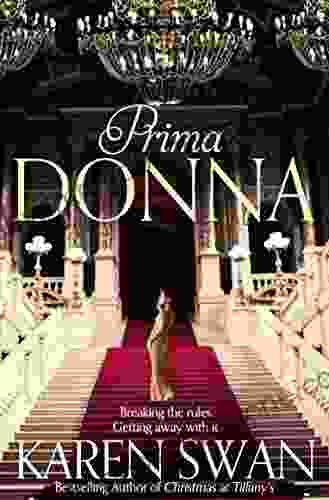
 Casey BellPrima Donna Karen Swan: Exploring the Allure and Controversies of a Legendary...
Casey BellPrima Donna Karen Swan: Exploring the Allure and Controversies of a Legendary...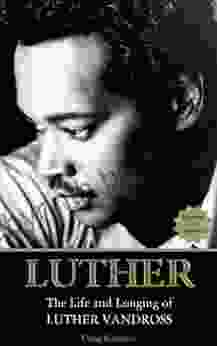
 Jett PowellThe Life and Longing of Luther Vandross: A Musical Odyssey of Love, Loss, and...
Jett PowellThe Life and Longing of Luther Vandross: A Musical Odyssey of Love, Loss, and... Javier BellFollow ·16.5k
Javier BellFollow ·16.5k W.H. AudenFollow ·4.7k
W.H. AudenFollow ·4.7k Billy FosterFollow ·8.5k
Billy FosterFollow ·8.5k Devin CoxFollow ·2.2k
Devin CoxFollow ·2.2k Corbin PowellFollow ·9.9k
Corbin PowellFollow ·9.9k Ethan MitchellFollow ·8.2k
Ethan MitchellFollow ·8.2k Colin RichardsonFollow ·13.9k
Colin RichardsonFollow ·13.9k Mikhail BulgakovFollow ·5k
Mikhail BulgakovFollow ·5k
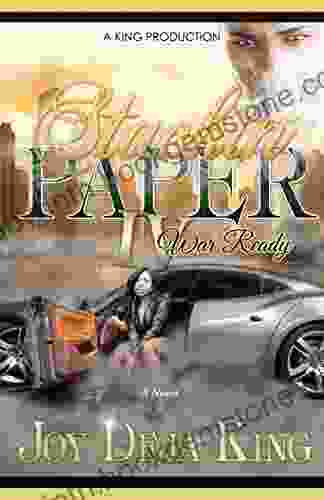
 Billy Peterson
Billy PetersonStackin' Paper Part War Ready: A Comprehensive Guide to...
In today's competitive financial landscape,...

 Jedidiah Hayes
Jedidiah HayesDennis Valder: Unveiling the Enchanting World of Cuba's...
In the heart...

 Ryan Foster
Ryan FosterDelving into the Captivating Enigma of The Green Season...
In the verdant tapestry of literary...
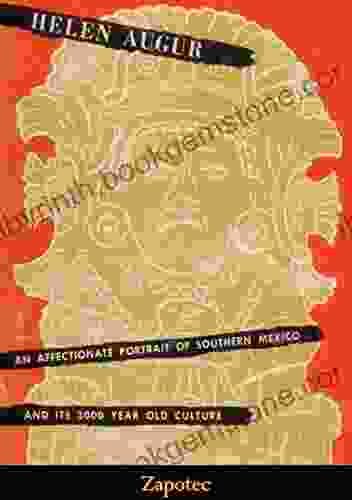
 Jeremy Mitchell
Jeremy MitchellZapotec Helen Augur: A Visionary Leader and Cultural...
In the heart of...

 Larry Reed
Larry ReedSci-Fi Alien Warrior Romance: A Tribute to the Brides of...
In the vast expanse of the...
4.8 out of 5
| Language | : | English |
| File size | : | 15135 KB |
| Text-to-Speech | : | Enabled |
| Screen Reader | : | Supported |
| Enhanced typesetting | : | Enabled |
| Print length | : | 152 pages |
| Lending | : | Enabled |



